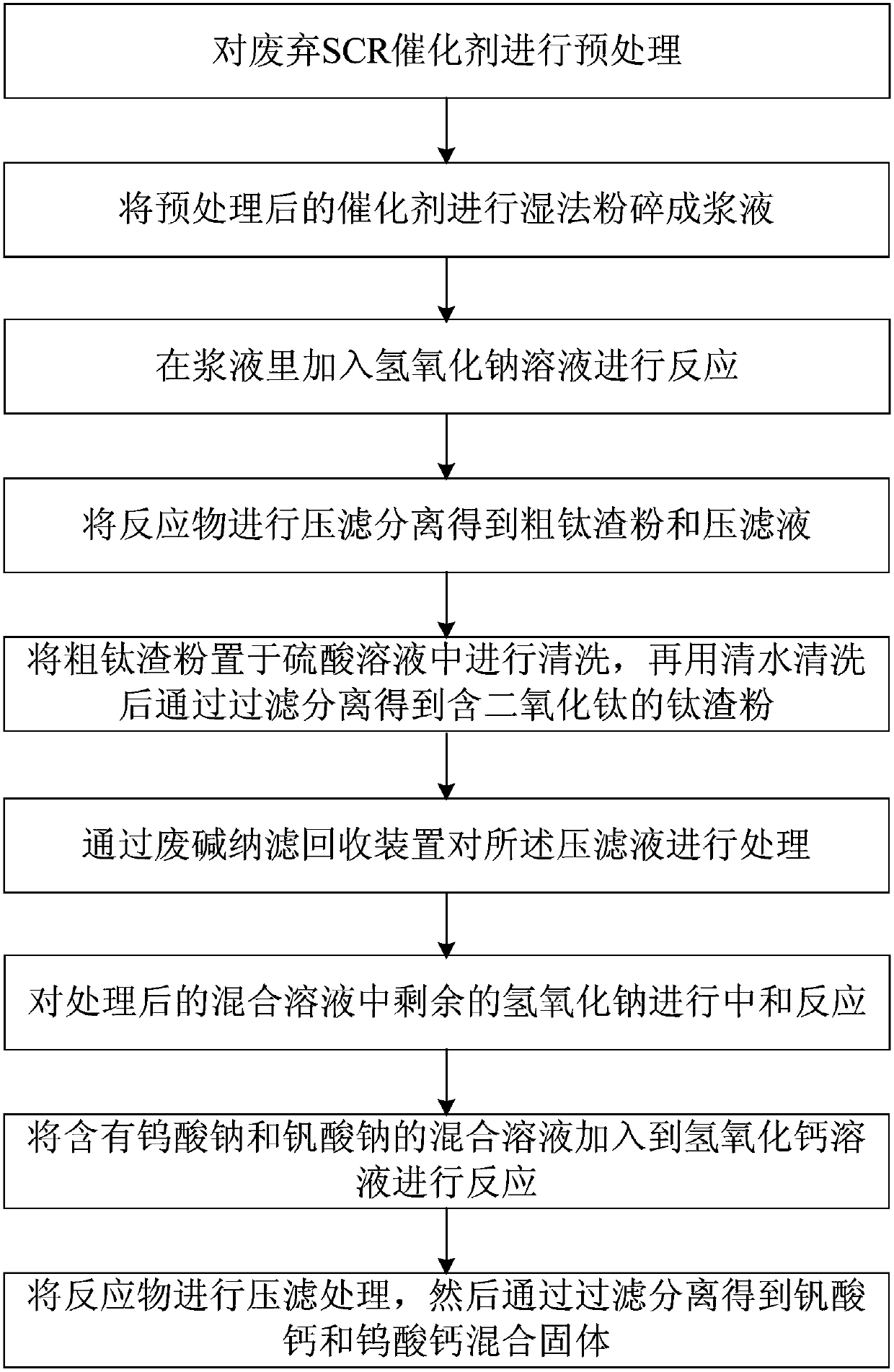A method for extracting titanium slag, tungsten and vanadium salts from waste scr catalyst
A technology of SCR catalyst and titanium slag, which is applied in the field of extracting titanium slag from tungsten and vanadium salts, can solve the problems of raw material resource occupation, high equipment requirements, and environmental pollution, and achieve the goal of reducing environmental damage, low equipment requirements, and low investment requirements Effect
- Summary
- Abstract
- Description
- Claims
- Application Information
AI Technical Summary
Problems solved by technology
Method used
Image
Examples
Embodiment Construction
[0038] The technical solutions of the present invention will be clearly and completely described below in conjunction with the drawings and specific embodiments of the present invention.
[0039] figure 1 It is a flow chart of the method for extracting titanium slag, tungsten and vanadium salt from waste SCR catalyst of the present invention. As shown in the figure, the method for extracting titanium slag, tungsten and vanadium salt from the waste SCR catalyst of the present invention includes:
[0040] 1) Pre-treating the waste SCR catalyst to remove the adsorbed impurities;
[0041] 2) Wet pulverize the pretreated waste SCR catalyst to a slurry with a certain particle size, for example, a slurry with a particle size of 150-200 mesh;
[0042] 3) Add sodium hydroxide solution with a concentration of 20% by mass to the slurry, and the mass ratio of the waste SCR catalyst to the sodium hydroxide solution is 5:1, and stir and react in the reactor at a temperature of 80-95°C 8-10 hours,...
PUM
| Property | Measurement | Unit |
|---|---|---|
| particle size | aaaaa | aaaaa |
Abstract
Description
Claims
Application Information
 Login to View More
Login to View More - R&D
- Intellectual Property
- Life Sciences
- Materials
- Tech Scout
- Unparalleled Data Quality
- Higher Quality Content
- 60% Fewer Hallucinations
Browse by: Latest US Patents, China's latest patents, Technical Efficacy Thesaurus, Application Domain, Technology Topic, Popular Technical Reports.
© 2025 PatSnap. All rights reserved.Legal|Privacy policy|Modern Slavery Act Transparency Statement|Sitemap|About US| Contact US: help@patsnap.com

